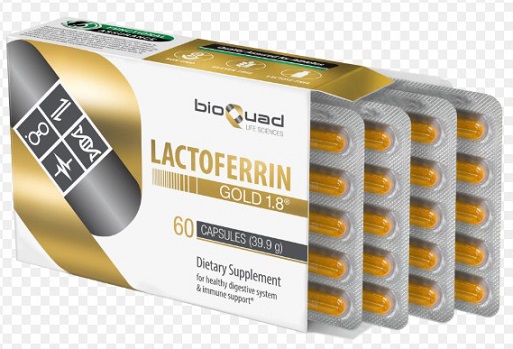Nikhil Prasad Fact checked by:Thailand Medical News Team Nov 24, 2025 1 hour, 15 minutes ago
Medical News: Researchers from the University of Molise in Italy and Sapienza University of Rome have uncovered promising new evidence showing that a natural milk-derived protein called bovine lactoferrin could help protect brain cells from the type of damage seen in Parkinson’s disease. Their work, detailed in an advanced cell-culture study, offers an unusually comprehensive view of how different forms of this protein behave when neurons are exposed to toxins that mimic real Parkinson’s disease processes. This
Medical News report highlights how one specific form of lactoferrin appears far more protective than the other, and why this discovery could influence future treatment strategies.
 New research shows native lactoferrin can strongly protect brain cells from Parkinson-like damage
Native Lactoferrin Shows Stronger Protection
New research shows native lactoferrin can strongly protect brain cells from Parkinson-like damage
Native Lactoferrin Shows Stronger Protection
The study compared two versions of bovine lactoferrin—Native lactoferrin with low iron content and Holo lactoferrin loaded with iron. Using a well-established toxin called rotenone to trigger Parkinson-like damage in laboratory-grown nerve cells, the researchers found that the native form consistently offered stronger protection. Native lactoferrin helped the cells maintain healthy shapes, preserved their long neurite extensions, and boosted key proteins such as β3-tubulin and GAP-43, which are vital for nerve growth and repair. In contrast, the iron-saturated Holo form was less effective and occasionally worsened oxidative stress, especially in situations where no toxin was present.
Protection of Dopamine and Antioxidant Defenses
A critical discovery was how lactoferrin affected tyrosine hydroxylase, the enzyme responsible for making dopamine, the chemical that becomes depleted in Parkinson’s disease. Both forms of lactoferrin improved its levels, but again the native version performed far better. Native lactoferrin also helped restore two major antioxidant enzymes, SOD-1 and SOD-2, greatly reducing DNA damage, lipid degradation, and other oxidative injuries that gradually kill neurons.
Restoring Iron Balance and Reducing Alpha Synuclein
Parkinson’s disease is strongly linked to abnormal iron buildup and harmful protein aggregation. The study revealed that native lactoferrin could reduce excess iron inside cells, normalize iron-transport proteins, and even lower levels of alpha synuclein—the same toxic protein that forms dangerous clumps in the brains of Parkinson’s patients. Meanwhile, the Holo version surprisingly increased alpha synuclein in some cases, suggesting that too much iron bound to the protein may worsen the problem.
Conclusion
Overall, the findings suggest that native bovine lactoferrin could become a powerful multi-action neuroprotective strategy, as it supports antioxidant defenses, stabilizes cell structures, improves dopamine-related pathways, and helps prevent harmful iron buildup. Its wide safety profile and natural origin add to its potential. More work is still needed in animals and huma
ns, but the science strongly points to native lactoferrin as a promising future therapy for Parkinson’s disease and related disorders.
The study findings were published in the peer reviewed International Journal of Molecular Sciences.
https://www.mdpi.com/1422-0067/26/23/11312
For the latest on Parkinson’s Disease, keep on logging to Thailand
Medical News.
Read Also:
https://www.thailandmedical.news/articles/alzheimer,-dementia-
